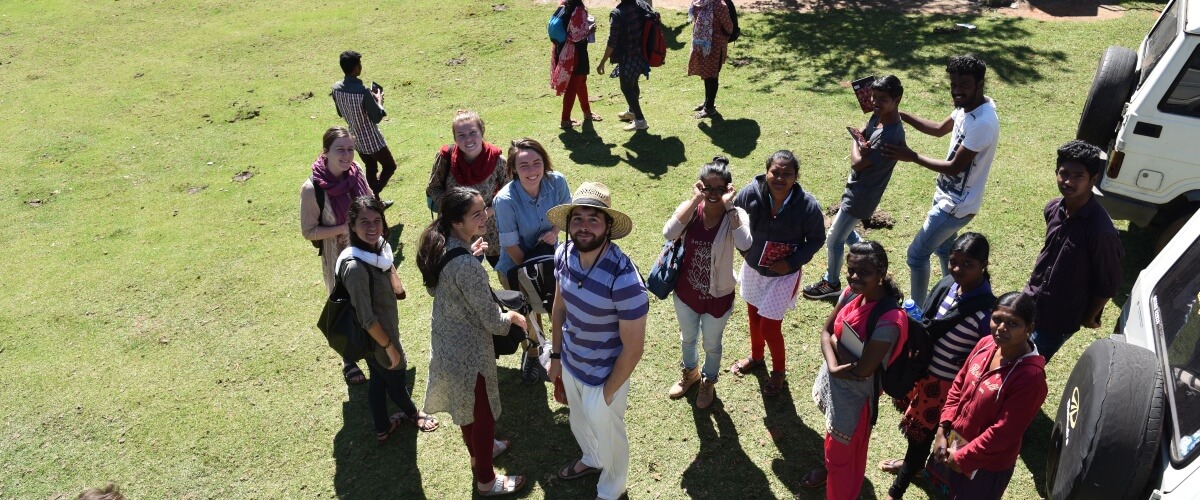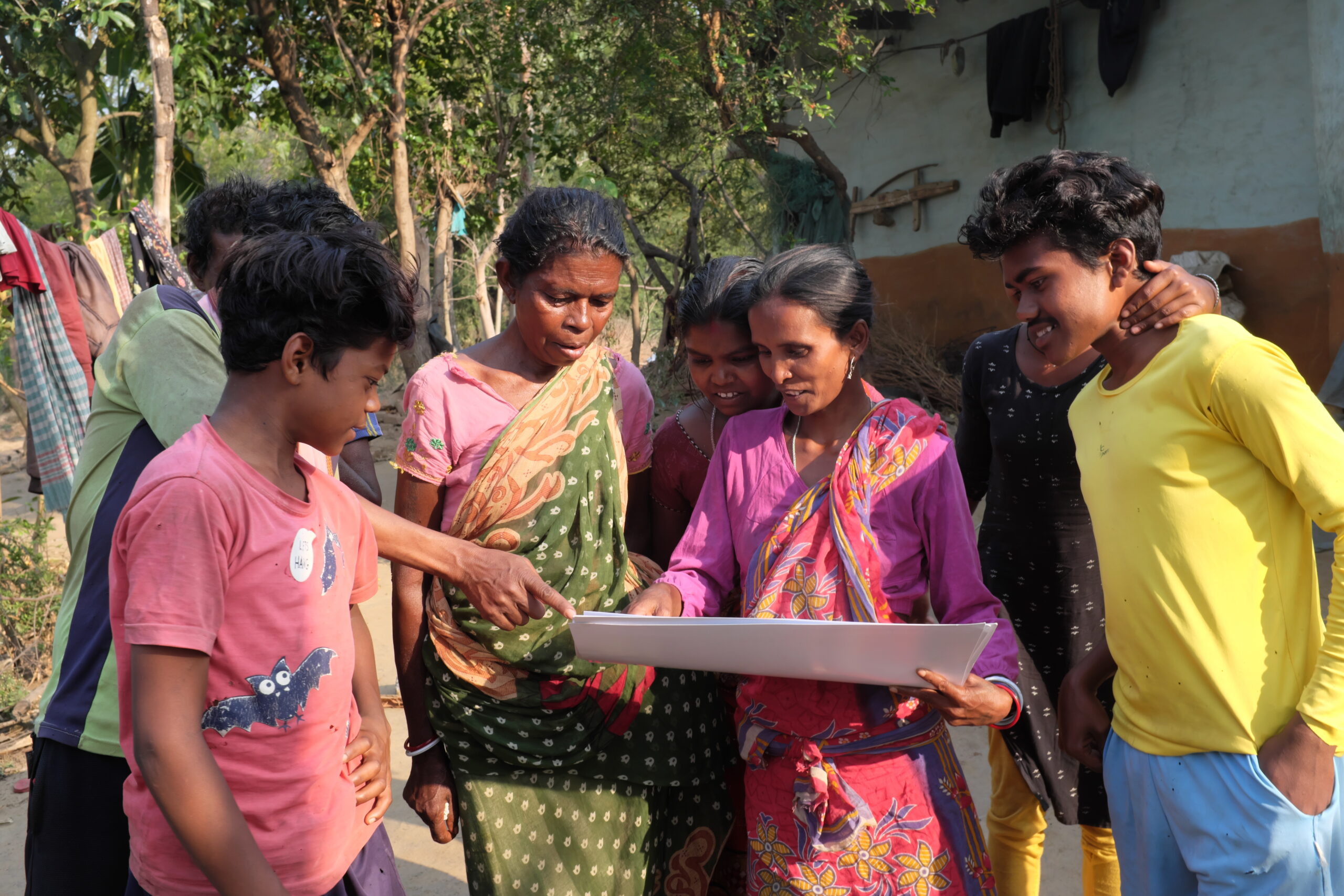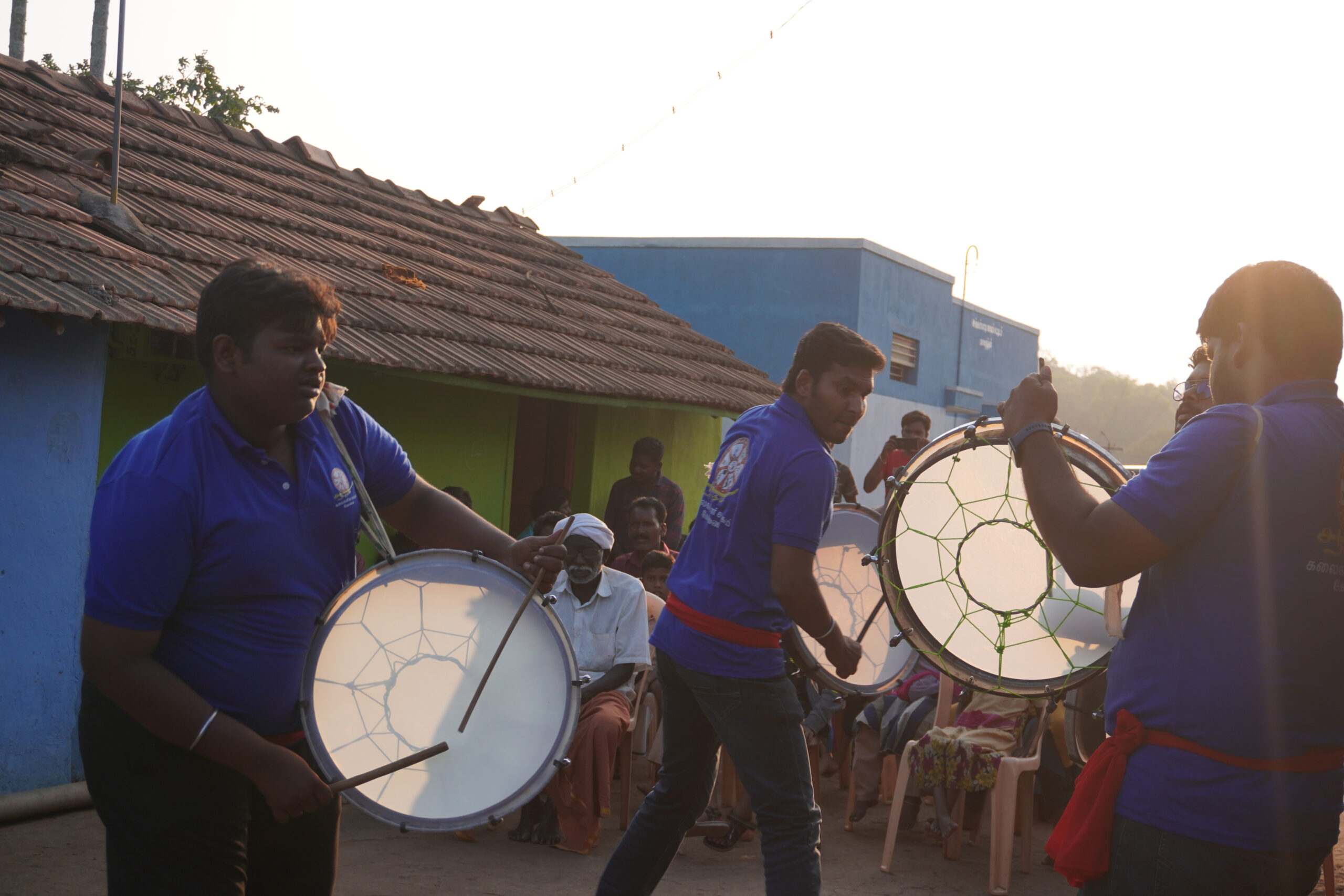What can one expect when field trips are sandwiched in between regular classes? Learning is fun! Week 2 of NFLC was on Ecology where students were introduced to some basic concepts in the field of ecology like biosphere, ecosphere, specialists and generalists, K-strategy, R-strategy, keystone species that would bring a set of positive changes to the ecosystem. Interdependence between plants, animals and humans was emphasised as the key component for survival.
Getting to know the Nilgiri Biosphere Reserve better on the NBR bus tour where we saw Rhododendron blooming in the Madithorai Slope, learning about invasive species. Visiting the Thalaikundah wetland. One of the Cornell students expressed that it was surprising to see what a real grassland looked like! The highlight of the trip was the Frog Hill (Needle Rock View Point) where just by sitting of one of the ledges of a rock; one had a birds’ eye view of the Gudalur valley and all the majestic rocks around it. Cornell students discover the challenge of doing justice to a thali meal at lunch. Later that day, at the Mudumalai Tiger Reserve, one student in particular remarked at how she felt sad when she saw a young baby being nursed by the mother just outside her little hut in the heart of a tiger reserve. The mother’s smile covered their harsh reality. We went to the sacred rocks at Kalhatty to watch bee hives that were left unharvested even though they were only 6ft above the ground. The bus trip was brought to a finale with a delicious Italian meal at the Place to Bee in Ooty.
Back to class with a lecture by Shiny explaining how the future lies on the wings of pollinators. Students were introduced to social and solitary pollinators, the ecosystem services provided by them, and the economics of crop pollination. In the afternoon, as part of the session, on human wildlife interactions students were introduced to the newly discovered ‘Land of Derdia’ by Abishek and Prudhvi. In this role play, some of the students were citizens, some gaur, and others foresters, development officers and government officials. The game was an innovation by Abhishek to explain how human occupation and infrastructure building eventually leads to less resources for wildlife. Could we have learnt about the human-wildlife conflicts any better than from the Land of Derdia?
The week ends with a two day session on videography lead by Rita Banerji who is a Keystone Trustee and heads Dusty Foot Productions, Delhi and the Green Hub Foundation in Tezpur. The students were divided into groups of four and asked to film stories based on the market in Kotagiri. In a couple of hours there were four unique films that captured the essence and life of the market. It was a long hard day but seeing their films made everyone feel very accomplished!


















